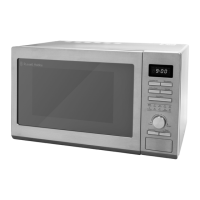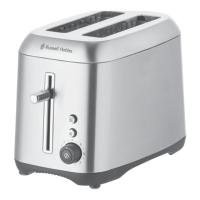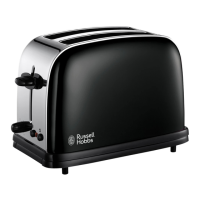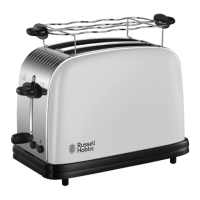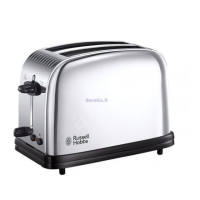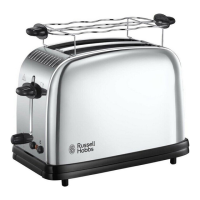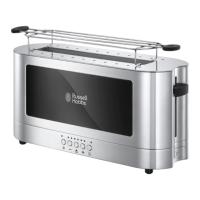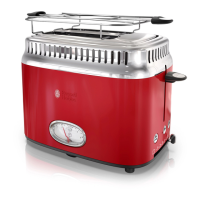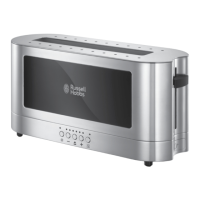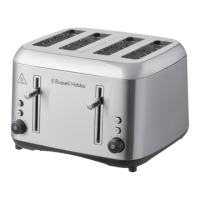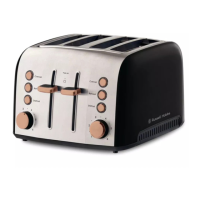frozen bread f
15 This takes the guesswork out of toasting frozen bread.
16 Leave the browning level at your favoured setting, insert the frozen bread, lower the
bread carriage handle, then press the f button.
17 The f light will come on, and the toasting time will be altered automatically to give
the same degree of browning you get with unfrozen bread.
caution don’t try to defrost bread – you’ll probably wreck the toaster
a) toasting frozen bread changes ice to steam, which escapes via the toasting slots
b) defrosting bread on a low setting changes ice to water, which drips into the
toaster, over the electronics and maybe the elements, causing mayhem
reheating toast
18 Use the lowest setting.
19 You must only reheat plain, “unbuttered” toast.
hints and tips
20 If toasting more than one slice, use slices of similar size, thickness and freshness.
21 Old (yesterday’s) bread contains less moisture, so makes crisper toast
22 Old or thin bread cooks faster than fresh or thick bread. Use a lower setting
23 Sweet bread products (tea cakes, fruit loaf, etc.) brown much more quickly than
ordinary bread, so should be toasted on a lighter setting
crumbs
24 Clean the crumbs out of your toaster frequently, to avoid a build up of crumbs. This
is unhygienic and could cause a fire hazard.
25 Unplug the toaster and let it cool down.
26 Slide the crumb tray out from underneath the side of the toaster, and empty it.
27 Wipe the crumb tray with a damp cloth, dry it, then replace it in the toaster.
28 Don’t use the toaster unless the crumb tray is fitted and closed.
care and maintenance
29 Unplug the toaster and let it cool.
30 Wipe outer surfaces with a damp cloth. If necessary, use a little washing-up liquid.
31 Don’t let anything enter the slot, you might damage the elements.
32 Don’t put the toaster in water or any other liquid.
33 Don’t use harsh or abrasive cleaning agents or solvents.
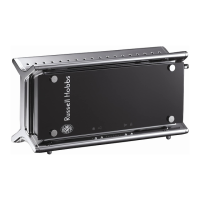
